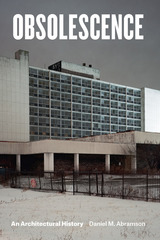3 books about Architectural History

Harvard
An Architectural History
Bainbridge Bunting
Harvard University Press
Here is an incisive and fully illustrated history of Harvard’s architecture told by the distinguished architectural historian Bainbridge Bunting, author of Houses of Boston’s Back Bay. The book examines the Federal architecture of Charles Bulfinch, H. H. Richardson’s Romanesque buildings, the Imperial manner reflected in Widener Library, as well as the work of such esteemed architects as Charles McKim, Gropius, and Le Corbusier—and it shows us how they all come together to form an amazingly coherent whole. This lively story of a university campus is a veritable microcosm of American architectural experience.
[more]

Houses of Boston’s Back Bay
An Architectural History, 1840–1917
Bainbridge Bunting
Harvard University Press
This superbly illustrated book records the development of Boston's Back Bay during the period of its greatest growth. Bainbridge Bunting focuses his study on one particularly significant architectural form—the town house. He chronicles, both pictorially and verbally, the first appearance, evolution, and eventual discard, during the era, of every local architectural style, all of which later gained national acceptance. He shows how architectural styles were affected by such developments as the electric light, changing preferences in materials, machine production of such interior parts as woodwork and mantels, new fire laws and building restrictions, and rising labor costs. He also provides an extensive account of the pivotal role played by members of the Boston Society of Architects in the growth of the profession throughout the country during this formative period. These Back Bay homes, Bunting points out, reflect to a striking degree the social and cultural attitudes of the community and, in the process of reconstructing the life that was led in them, he offers an absorbing and perceptive commentary on Boston society and its mores.
[more]

Obsolescence
An Architectural History
Daniel M. Abramson
University of Chicago Press, 2016
In our architectural pursuits, we often seem to be in search of something newer, grander, or more efficient—and this phenomenon is not novel. In the spring of 1910 hundreds of workers labored day and night to demolish the Gillender Building in New York, once the loftiest office tower in the world, in order to make way for a taller skyscraper. The New York Times puzzled over those who would sacrifice the thirteen-year-old structure, “as ruthlessly as though it were some ancient shack.” In New York alone, the Gillender joined the original Grand Central Terminal, the Plaza Hotel, the Western Union Building, and the Tower Building on the list of just one generation’s razed metropolitan monuments.
In the innovative and wide-ranging Obsolescence, Daniel M. Abramson investigates this notion of architectural expendability and the logic by which buildings lose their value and utility. The idea that the new necessarily outperforms and makes superfluous the old, Abramson argues, helps people come to terms with modernity and capitalism’s fast-paced change. Obsolescence, then, gives an unsettling experience purpose and meaning.
Belief in obsolescence, as Abramson shows, also profoundly affects architectural design. In the 1960s, many architects worldwide accepted the inevitability of obsolescence, experimenting with flexible, modular designs, from open-plan schools, offices, labs, and museums to vast megastructural frames and indeterminate building complexes. Some architects went so far as to embrace obsolescence’s liberating promise to cast aside convention and habit, envisioning expendable short-life buildings that embodied human choice and freedom. Others, we learn, were horrified by the implications of this ephemerality and waste, and their resistance eventually set the stage for our turn to sustainability—the conservation rather than disposal of resources. Abramson’s fascinating tour of our idea of obsolescence culminates in an assessment of recent manifestations of sustainability, from adaptive reuse and historic preservation to postmodernism and green design, which all struggle to comprehend and manage the changes that challenge us on all sides.
In the innovative and wide-ranging Obsolescence, Daniel M. Abramson investigates this notion of architectural expendability and the logic by which buildings lose their value and utility. The idea that the new necessarily outperforms and makes superfluous the old, Abramson argues, helps people come to terms with modernity and capitalism’s fast-paced change. Obsolescence, then, gives an unsettling experience purpose and meaning.
Belief in obsolescence, as Abramson shows, also profoundly affects architectural design. In the 1960s, many architects worldwide accepted the inevitability of obsolescence, experimenting with flexible, modular designs, from open-plan schools, offices, labs, and museums to vast megastructural frames and indeterminate building complexes. Some architects went so far as to embrace obsolescence’s liberating promise to cast aside convention and habit, envisioning expendable short-life buildings that embodied human choice and freedom. Others, we learn, were horrified by the implications of this ephemerality and waste, and their resistance eventually set the stage for our turn to sustainability—the conservation rather than disposal of resources. Abramson’s fascinating tour of our idea of obsolescence culminates in an assessment of recent manifestations of sustainability, from adaptive reuse and historic preservation to postmodernism and green design, which all struggle to comprehend and manage the changes that challenge us on all sides.
[more]
READERS
Browse our collection.
PUBLISHERS
See BiblioVault's publisher services.
STUDENT SERVICES
Files for college accessibility offices.
UChicago Accessibility Resources
home | accessibility | search | about | contact us
BiblioVault ® 2001 - 2024
The University of Chicago Press









